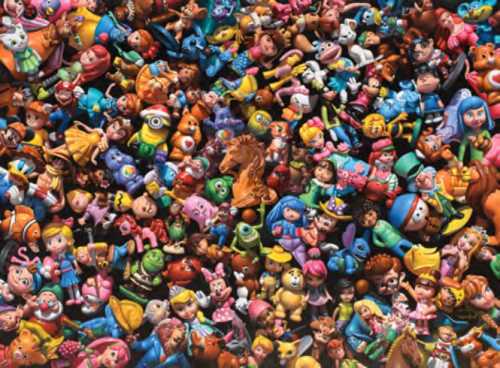About Siamak Azmi
Siamak Azmi is mainly known for his paintings of dolls. This contemporary painter was born in Kermanshah. His university education was in geology, and he started painting seriously in 1990. Two years later, he also taught painting. For the first time in 2001, he exhibited his works as a group at the Abbasi Hotel in Tehran. In the same year, in a project commissioned by the Isfahan Islamic Seminary Research Center, he painted 46 paintings based on Quranic parables displayed in 70 different cities in Iran. In this regard, he wrote scenarios for making animation. His first solo exhibition was held in Tehran's Abbasi Hotel in 2002. In 2006, he had a show at Hozeh Honari institute of Isfahan. His first international appearance was in a group exhibition in Turkmenistan in 2006. The following year, he participated in the 2006 China Expo. In 2009, his paintings were displayed in a solo exhibition in Venice, Italy. He has had numerous exhibitions in Iran, France, Turkey, England, Canada, and Qatar. His works are kept in prestigious art centers in these countries. In addition to painting, this artist has also had experience in video art.
Azmi has gone through different stages in his artistic process. In his early works, he painted pictures with representational and objectivist techniques, which had symbolic and poetic elements in terms of subject matter and logic of arrangement. In the 2000s, dolls' legs came into Azmi's paintings. He creates his famous paintings by arranging a pile of dolls on the ground. These large-scale paintings still follow a realistic approach. Objectivism, finishes, and volumes are derived from pre-modern painting methods. What makes these paintings new is not in his painting style but in his subjects. Determined symbolic mentalities appear in these works in a more calculated form. For example, in his painting "Deception," he places a wooden mannequin in the center of the frame, surrounded by a crowd of dolls. In other panels of this collection, by removing the title of the works, he leaves the way for the readability and various interpretations of the audience. As he admits in an interview, he is not interested in imposing a specific narrative and wants to maintain the different perceptions of his audience; he prefers that everyone encounters his paintings based on their imagination and mental backgrounds. The presence of plastic and colorful Walt Disney dolls in these frames is also reminiscent of American pop art.
The Most Expensive Artwork
At Auctions
First Attendance
28 May 2013
# Attendance
8
# Artworks
8
Average Realized Price
11,253 USD
Average Min Estimate
5,914 USD
Average Max Estimate
8,441 USD
Sell-through Rate
87.5%
Average Growth of Artwork Worth
89.416%
Timeline
Arab, Iranian & Turkish Art / Modern & Contemporary Middle Eastern Art | N°22 auction
15 December
Beyond Imagination exhibition
13 December
Recovery/ The Sixth Series exhibition
6 September
Resize exhibition
16 August
Endless Treasures exhibition
21 June
The 17th Tehran Modern and Contemporary Iranian Art auction
18 July
Recovery/ The third series exhibition
10 March
Lotfi x Mashahir Cross 2 exhibition
9 September
Tehran- 16th- Iranian contemporary art auction
1 July
The 14th Tehran- Contemporary Iranian Art auction
12 August
Parenthesis/The 1400 series exhibition
5 March
Collector 7 exhibition
5 February
The 13th Tehran- Modern and Contemporary Iranian Art auction
15 January
Full Length... exhibition
4 September
No.3 auction
23 April
Toys exhibition
20 September
Realism from yesterday to today exhibition
3 February
The Dolls exhibition
6 January
چهارمین دوره حراج تهران auction
29 May
دومین دوره حراج تهران auction
28 May
It's Time to Come Back exhibition
18 January
Articles
۱7th Tehran Auction Sales Report 26 July 2023
The 17th Tehran auction: modern and contemporary, was held on Friday July 21st, 2023 at Parsian Azadi Hotel. This auction achieved a total sale of 214 billion tomans equivalent to 4.3 million dollars, which was a growth of 77.8% compared to the previous period. Artchart has observed the 17th Tehran auction in the upcoming report.

